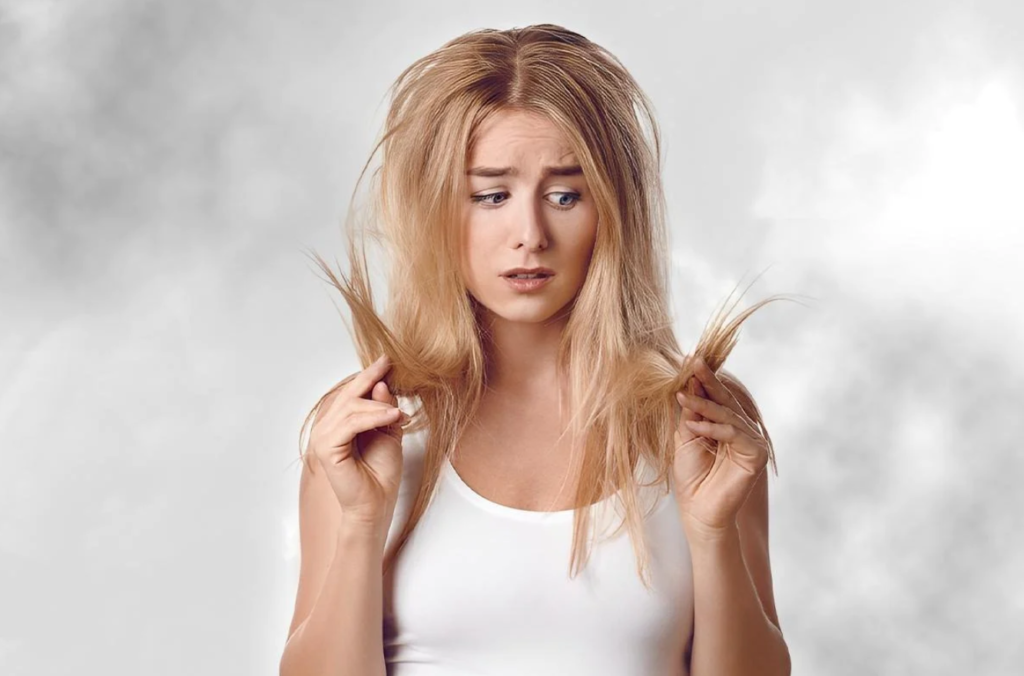Understand the link between a sedentary lifestyle and hair thinning. Discover how lack of exercise affects your hair and adopt habits for an active, healthy scalp.
Hair thinning is a concern that transcends age and gender, impacting many individuals globally. While genetics and medical conditions play a role, lifestyle habits can significantly contribute to this issue. In this comprehensive guide, we delve into the habits that may be the silent culprits behind hair thinning.
ALSO READ: 10 DIY Yogurt Hair Masks For Stronger, Healthier Hair: To Fight With Dandruff, Hair Fall, Dryness

The Silent Aggressor: Poor Nutrition that Cause Hair Thinning
Lack of Essential Nutrients
Nutrition forms the bedrock of overall health, and your hair is no exception. A diet lacking in essential nutrients such as vitamins A, C, D, and E, as well as minerals like iron and zinc, can lead to weakened hair follicles. These nutrients are vital for promoting hair growth and maintaining its thickness.

Crash Diets and Their Impact
Embarking on extreme diets for rapid weight loss may seem tempting, but they often deprive the body of crucial nutrients. Crash diets can result in protein deficiencies, a key component for healthy hair. Insufficient protein intake weakens hair structure, causing it to thin over time.

Lifestyle Choices: Stress and Its Toll on Your Tresses
Stress has become an inevitable part of modern life, and its effects extend beyond mental well-being. Chronic stress triggers hormonal imbalances, specifically an increase in cortisol levels, which can lead to hair thinning. Incorporating stress management techniques such as meditation and yoga into your routine can mitigate this risk.

Styling Habits: Aesthetic Choices with Consequences
Overstyling and Heat Damage
While embracing various hairstyles can be fun, excessive styling using heated tools can wreak havoc on your hair. Overstyling and heat damage can strip hair of its natural moisture, making it brittle and prone to thinning. Opt for heat-free styling methods and give your hair occasional breaks to recover.

Tight Hairstyles and Traction Alopecia
Constantly pulling your hair into tight styles may contribute to a condition known as traction alopecia. This type of hair loss occurs when there is prolonged tension on the hair shafts, leading to weakened follicles and subsequent thinning. Choosing looser hairstyles can prevent this form of hair damage.
ALSO READ: Hair Oil For Winters: Your Ultimate Guide To Healthy, Lustrous Locks

Environmental Factors: The Unseen Adversaries
Pollution and Hair Health
Living in urban environments exposes your hair to various pollutants that can accumulate on the scalp. Pollution can compromise hair health, leading to thinning over time. Regularly cleansing your hair and scalp can help remove these pollutants, promoting a healthier environment for hair growth.

Sun Exposure and Ultraviolet (UV) Damage
Prolonged exposure to the sun’s UV rays can damage the hair shaft and weaken its structure. UV damage may result in hair thinning and increased vulnerability to breakage. Wearing protective headgear and using hair care products with UV filters can help shield your hair from the sun’s harmful effects.

Taking Charge of Your Hair’s Destiny
In summary, understanding the habits that contribute to hair thinning empowers you to make informed choices for the well-being of your hair. Prioritizing a nutrient-rich diet, managing stress, adopting gentle styling practices, and safeguarding against environmental factors are crucial steps in maintaining a luscious mane.

Remember, breaking free from detrimental habits requires consistency and conscious effort. By incorporating hair-friendly practices into your daily routine, you can nurture your hair and minimize the risk of thinning. Your hair deserves the best care, so take charge of your habits and let your locks flourish.
Click here, to check HNN’s latest post.
ALSO READ: Oils For Reducing White Hairs: A Comprehensive Guide
Image Source: Google




































